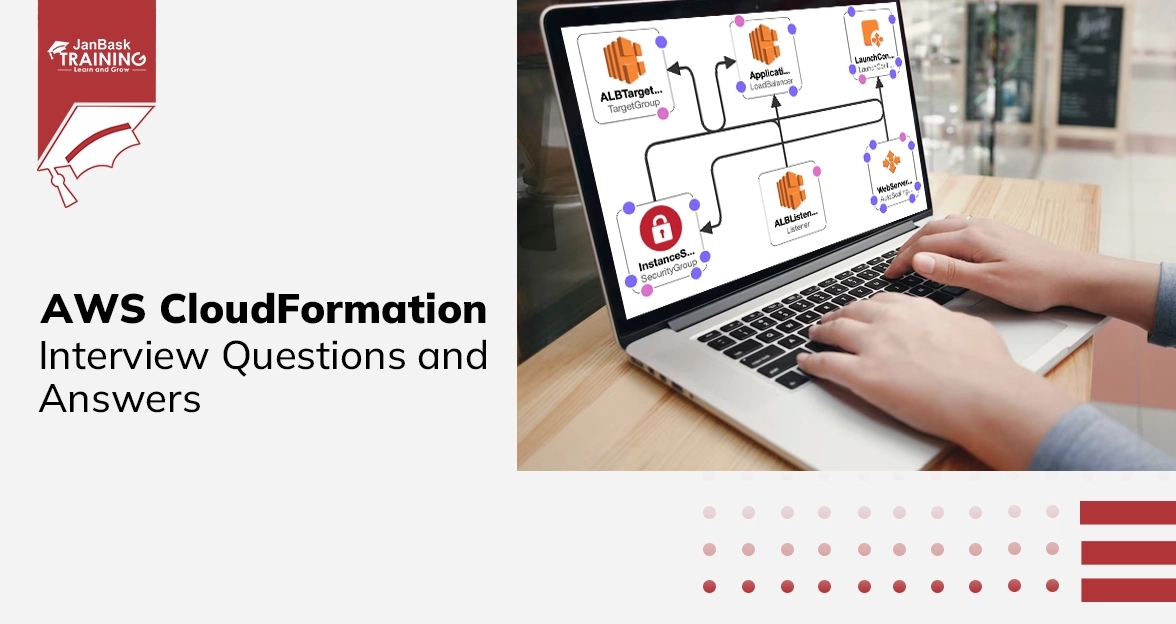 Grab Deal : Upto 30% off on live classes + 2 free self-paced courses - SCHEDULE CALL
Grab Deal : Upto 30% off on live classes + 2 free self-paced courses - SCHEDULE CALL

 Grab Deal : Upto 30% off on live classes + 2 free self-paced courses - SCHEDULE CALL
Grab Deal : Upto 30% off on live classes + 2 free self-paced courses - SCHEDULE CALL

SQS (Simple Queue Service) is an AWS service managing message queues, allowing distributed components to communicate asynchronously. SWF (Simple Workflow Service) coordinates and manages tasks in distributed applications. SNS (Simple Notification Service) is a pub/sub messaging service facilitating message delivery to various endpoints like HTTP, SQS, or Lambda, enabling event-driven architectures in AWS cloud applications. Explore the best questions and answers on SQS, SWF, and SNS in AWS.
Ans: Amazon SQS is a fully managed, fast, reliable, and scalable message queuing service designed to simplify and cost-effectively manage communication between components in a cloud application. It enables the transmission of any volume of data at varying levels of throughput without message loss or the continuous availability of other services.
By leveraging Amazon SQS, users can offload the administrative responsibilities of operating and scaling a messaging cluster while paying only for the actual usage.
This service facilitates the storage of application messages on a reliable and scalable infrastructure, empowering the seamless movement of data between distributed components to execute diverse tasks as needed.
Ans: An Amazon SQS queue acts as a buffer between components in a system—receiving data from application components and directing it to components responsible for processing.
The tasks are queued if processing servers cannot handle the workload promptly, such as during a traffic spike. This ensures that the processing servers can handle the queued tasks when they become available, preventing data loss due to insufficient resources.
The queue effectively manages the flow of data, ensuring reliable processing under varying workloads.
Ans: Delay queues in Amazon SQS let you hold off the delivery of new messages for a specific number of seconds. When you create a delay queue, any message sent to it stays hidden from consumers during the delay period.
To set up a delay queue, use CreateQueue and adjust the DelaySeconds attribute to a value between 0 and 900 (15 minutes). An existing queue can also be turned into a delay queue using SetQueueAttributes by tweaking the DelaySeconds attribute. The default is 0 seconds.
Ans: Amazon SQS, like many AWS Cloud services, is accessed through HTTP request-response. An average Amazon SQS request-response takes slightly less than 20ms from Amazon Elastic Compute Cloud (Amazon EC2).
This translates to issuing over 50 Application Programming Interface (API) requests per second from a single thread (a bit fewer for batch API requests due to additional workload).
The throughput scales horizontally, meaning that adding more threads and hosts increases the overall throughput. Thanks to this scaling model, some AWS customers successfully manage queues processing thousands of messages every second.
Ans: Amazon SQS supports dead letter queues - a designated queue that other source queues can target to send messages that couldn't be processed successfully.
The primary advantage of a dead letter queue is the ability to segregate and isolate messages that failed processing. This allows for in-depth analysis of messages sent to the dead letter queue, aiding in identifying and resolving the underlying causes of failure.
Ans: While IAM is typically used to manage interactions within AWS identities and queues, there are situations where you may need to expose queues to other accounts.
This can include scenarios like granting another AWS account-specific access to your queue (e.g., SendMessage), providing time-limited access, allowing access only from your Amazon EC2 instances, or denying access to another AWS account. These options offer flexibility in tailoring access permissions to meet specific requirements.
Ans: Amazon SWF simplifies the creation of applications that coordinate work across distributed components. In this context, a task represents a logical unit of work performed by an application component.
Coordinating tasks involves handling inter-task dependencies, scheduling, and concurrency aligned with the application's logical flow. Amazon SWF provides comprehensive control over task implementation and coordination, alleviating concerns about intricate details like progress tracking and state maintenance and allowing developers to focus on the application's logic.
Ans: Amazon SWF enables the implementation of distributed, asynchronous applications through workflows. Workflows serve to coordinate and oversee the execution of activities that can run asynchronously across various computing devices, supporting both sequential and parallel processing.
When designing a workflow, the first step involves analyzing the application to identify its component tasks, represented as activities in Amazon SWF. The workflow's coordination logic then determines the sequential and parallel order in which these activities are executed.
Ans: An activity worker in Amazon SWF is a singular computer process (or thread) responsible for executing activity tasks within a workflow. Various types of activity workers handle tasks of distinct activity types, and multiple workers can process the same type of task concurrently.
When an activity worker is ready to handle a new activity task, it queries Amazon SWF for tasks suitable for that worker. After receiving a task, the worker processes it to completion, reports the status and result back to Amazon SWF, and then proceeds to poll for a new task.
Ans: In Amazon SWF, task lists serve as an organizational tool for managing tasks associated with a workflow. Conceptually, task lists are akin to dynamic queues. When scheduling a task in Amazon SWF, you can designate a queue (task list) for it. Similarly, when polling Amazon SWF for a task, you specify the queue (task list) from which to retrieve the task.
Task lists offer a flexible mechanism for routing tasks to workers based on the specific requirements of your use case. They are dynamic, meaning you don't need to register or explicitly create a task list—scheduling a task automatically creates the task list if it doesn't already exist.
Ans: Amazon SWF objects have unique identification based on various parameters:
Ans: Amazon SNS comprises two types of clients: publishers and subscribers, also called producers and consumers. Publishers communicate asynchronously with subscribers by sending messages to a topic.
A topic serves as a logical access point or communication channel, maintaining a list of subscribers and the methods to communicate with them. When a message is sent to a topic, it is automatically forwarded to each subscriber using the configured communication method for each subscriber.
Ans: Application and system alerts in AWS involve SMS and/or email notifications triggered by predefined thresholds. Many AWS Cloud services leverage Amazon SNS for this purpose, allowing users to receive immediate notifications when specific events occur.
For instance, changes to an Auto Scaling group in AWS can trigger alerts, providing timely updates on critical events through the versatile notification system of Amazon SNS.
Ans: Amazon SNS facilitates message transmission to individuals or groups through push email and text messaging.
For instance, Amazon SNS can push targeted news headlines to subscribers via email or SMS. Upon receiving the email or SMS text, interested recipients can delve deeper by visiting a website or launching an application, demonstrating the versatile applications of Amazon SNS in delivering timely and relevant content.
Ans: Amazon SNS involves two primary client types: publishers (producers) and subscribers (consumers). Publishers communicate asynchronously with subscribers by sending messages to a topic.
A topic serves as a logical access point or communication channel, maintaining a list of subscribers and the methods used to communicate with them. When a message is sent to a topic, it is automatically forwarded to each subscriber using the configured communication method specific to each subscriber.
AWS Solution Architect Training and Certification

As we wrap up our discussion on AWS Solutions – SQS, SWF, and SNS interview questions and answers, it's crucial to recognize that becoming proficient in the AWS ecosystem is an ongoing commitment. To boost your skills, explore AWS certified solution architect responsibilities by JanBask Training. The batch is starting soon!


Top AWS Interview Questions and Answers


AWS Solution Architect Interview Questions and Answers

Cyber Security

QA

Salesforce

Business Analyst

MS SQL Server

Data Science

DevOps

Hadoop

Python

Artificial Intelligence

Machine Learning

Tableau
Download Syllabus
Get Complete Course Syllabus
Enroll For Demo Class
It will take less than a minute
Tutorials
Interviews
You must be logged in to post a comment